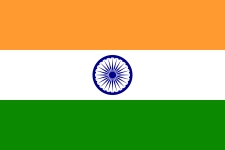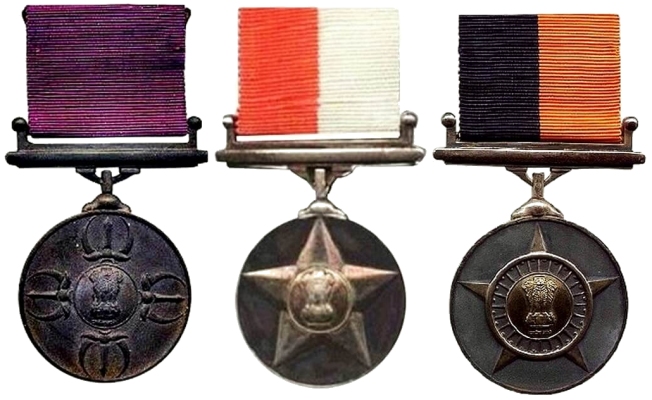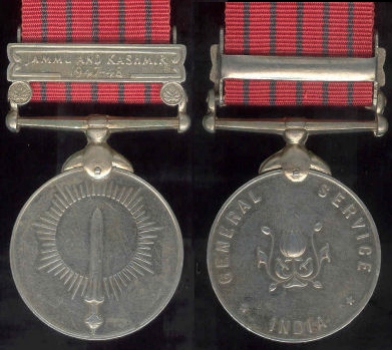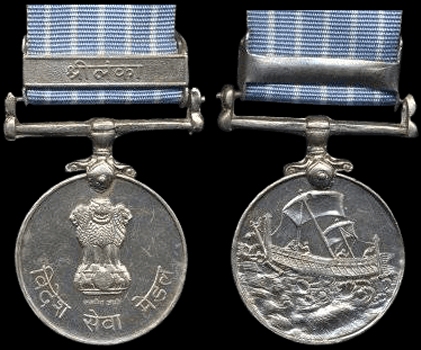
The Republic of India and the Republic of (South) Korea both celebrate August 15th as Independence Day. They gained their independence within two years of each other (1947 and 1945 respectively).
India became a member of the United Nations when the organization was founded on Oct. 24, 1945, almost three years before it was to gain independence from the Commonwealth. India supported the UN Security Council Resolutions of June 25th and 27th, 1950, in naming North Korea as the aggressor. Acting under provisions of the Security Council Resolution of July 7th, 1950, which requested UN Member States to furnish military assistance to repel the aggressor, Mr. Trygve Lie, the Secretary General of the United Nations, asked India to send troops for peacekeeping operations. In a special session of the Indian Parliament on July 31st, the Indian President, Dr. Rajendra Prasad expressed his approval of the UN action in Korea. He re-affirmed that Mr. Nehru’s initiative was intended only to strengthen the moral force of the UN, and in no way to condone aggression. Under an agreement, India decided to provide a medical contingent. India was also destined to play a mediator role, to localize the conflict and bring about peace on the war-torn peninsula. Near the end of the war, India chaired the Neutral Nations Repatriation Commission (NNRC), created to facilitate exchanges of prisoners of war (POWs). In this process, India dispatched its Custodian Force of India (CFI) to Korea, consisting of 5230 men, according to the Indian Embassy in Korea, to help manage the POW camps. India also chaired the Neutral Nations Supervisory Commission (NNSC).
South Korea and India did not establish diplomatic relations until 1973. India agreed to upgrade bilateral relations to a “Special Strategic Partnership” during former President Park Geun-hye’s state visit to India in 2014. The agreement was signed during Indian Prime Minister Narendra Modi’s visit to Korea in 2015.
The Indian 60th Parachute Field Ambulance
The Indian 60th Parachute Field Ambulance, was created in August 1942 and had distinguished itself during World War II. Many of the medics, who were to serve in Korea, had combat experience from World War II and were trained paratroopers. However, they did not take part in active combat. The Indian medical unit was the largest medical support unit in Korea.
The Indian 60th Parachute Field Ambulance departed from Calcutta, India, on Nov. 7, 1950, and arrived in Pusan on Nov. 20. Upon arrival, it was split into two groups, with both groups serving under Gen. S.P.P. Thorat. The main group under Lt. Col. [A.G.] Rangaraj was placed in support of the 27th British Commonwealth Brigade. The second part of the unit commanded by Maj. N.B. Banerjee was sent to Taegu, where it established a field hospital. In all, 627 medics from the 60th Parachute Field Ambulance treated nearly 225,000 soldiers and civilians during the war. India suffered the most casualties among all the medical units in Korea. According to Korea’s Ministry of Patriots and Veterans Affairs, 3 Indians were killed and another 23 were wounded. Since India did not have a rotation policy, the medical unit held another distinction. The original members of the unit spent 39 months in Korea. Except for the South Koreans, this was unique among the United Nations forces.
On August 23, 1953, the 60 Para Field Ambulance joined the Custodian Forces of India (CFI) at the Demobilization Zone, and opened treatment centers in to assist those Prisoners of War (PW) who needed medical attention.
With the armistice signed in 1953 and the POWs exchanged, the last of the Indian soldiers departed Korea in February 1954.
The Bucket Brigade
Shortly after the Indian paratroopers and medics arrived to support United Nations forces, the unit earned a distinctive moniker.
They arrived in Pusan on Nov. 20, 1950, and were split into two groups. The main group under Lt. Col. [A.G.] Rangaraj was placed in support of the 27th British Commonwealth Brigade. They met with the Commonwealth forces in Pyongyang on Dec. 4. They had hardly begun to set up their equipment when they received orders to withdraw. The Chinese and North Korean counter-offensives were pushing the United Nations forces south. The 60th had no transport allocated for their hasty withdrawal. All the medical equipment was to be blown up so that it could not be used by the opposing forces. Lt. Col. Rangaraj was determined to not see the life-saving equipment go to waste so early in the mission. He noticed an abandoned steam locomotive sitting on the tracks. As unusual as it sounds, the medical unit just happened to have someone familiar with operating steam locomotives. The sepoy [a term for an Indian infantryman], had once been an engine assistant on the Indian railway system. He examined the engine and reported to the Commanding Officer that given fuel, water and considerable assistance from God, it could be utilized. The men got to work. They formed a human chain, and delivered the water from a nearby stream to the train in buckets. Their ingenuity paid off. Just minutes before the U.S. engineers blew up the last bridge across the Taedong River, the locomotive chugged past them, with all the equipment and men aboard. For the remainder of the Korean War, the medical unit was nicknamed the “Bucket Brigade.”
Manchuria
The Indian Red Cross tried to send medical personnel and supplies to the Manchurian region of China, to treat wounded Chinese soldiers. However, the operation failed because the shipment was hijacked with the assistance of the Kuomintang government in Taiwan.
Awards
Gallantry Awards
In June 1948, it was decided to institute new Indian awards for gallantry, namely: the Param Vir Chakra (PVC), Maha Vir Chakra (MVC), and Vir Chakra (VrC). After the PVC, the MVC and VrC were to be the second and third-highest gallantry awards during wartime .
Despite gaining its independence from British rule in 1947, India remained a dominion of the United Kingdom. The Governor-General of India could not approve the establishment of any awards without the consent of the British Crown. A Royal Warrant was sent to London for approval by King George VI. At the time, India was in a protracted war with Pakistan (Oct. 1947 to Jan. 1949). The King could not sanction awards during a war between two members of the Commonwealth. This combined with the fact that the English King would not have a symbolic presence on the awards. The warrants to formally establish gallantry awards were not put into effect. On January 1, 1949, a ceasefire was implemented in Jammu and Kashmir. Nehru forwarded the original draft warrants to Governor-General Chakravarti Rajagopalachari to “institute the awards as your own”. But Rajagopalachari felt that since India was still a British Dominion, it would not be appropriate. He suggested to Nehru to wait until India became a republic, which was scheduled for January 26, 1950. At that time, it would be appropriate to announce the establishment of a system of awards. On Jan. 26, 1950, gallantry awards were established and made retroactive back to Aug. 15, 1947.

India’s Gallantry awards are:
- Param Vir Chakra, is the highest military award in India and awarded for national bravery in the presence of the enemy. The Param Vir Chakra translates as the “Wheel of the Ultimate Brave”. This is the equivalent of the England’s Victoria Cross. No awards were earned during the Korean War.
- Maha Vir Chakra Is the second-highest gallantry decoration and is awarded for acts of conspicuous gallantry in the presence of the enemy, whether on land, at sea or in the air. Three were awarded during the Korean War.
- Vir Chakra Is the third in precedence in the awards for wartime gallantry. Six were awarded during the Korean War.
The Param Vir Chakra (PVC) also carries a pension for those under the rank of lieutenant (or the appropriate service equivalent), and in some cases a cash award. Upon the death of the recipient, the pension is transferred to the spouse until their death or remarriage. In the case of a posthumous recipient who is unmarried, the allowance is paid to their parents. In the case of the award being conferred posthumously on a widow or widower, the allowance is to be paid to their son or unmarried daughter. A monthly stipend of ₹20,000 (Rupee) is given to the awardee along with their regular pay. The award amount and pension benefits are exempted from income tax. In addition, different ministries under the central government have various financial awards for PVC awardees.Many Indian states have established individual pension rewards that far exceed the central government’s stipend for recipients of the PVC. A relatively unknown convention in the Indian Army is for a PVC recipient to be saluted, when in ceremonial uniform, by everyone in the Army irrespective of rank, although no legal provision exists.
During Operation Tomahawk in March 1951: one officer, Maj. NB Banerjee, was awarded the Maha Vir Chakra (MVC), and two officers, Maj. V Rangaswamy and Capt. NC Das along with one Operating Room Assistant, Naik Rattan Singh, received the Vir Chakra (VrC), the third-highest award for gallantry.
Lt Col Rangaraj, who commanded the 60th Parachute Field Ambulance, earned him the Maha Vir Chakra (MVC) Medal. Lt. Col. Rangaraj and his men took part in Operation Tomahawk, an airborne military mission led by the U.S. 187th Infantry Regiment in Paju, Gyeonggi, on March 23, 1951. The operation was part of Operation Courageous. During Operation Commando in September 1951, Capt. Ashok Banerjee was awarded the Vir Chakra (VrC). In June 1952, the 60 Para Field Ambulance unit suffered six casualties among its ranks, due to adverse weather conditions and continuing enemy attacks and indiscriminate firing. Naik Umrao Singh was awarded the VrC for risking his life on several occasions to evacuate casualties during the period of December 1950 to 1952.
There are also peacetime gallantry awards, namely, the Ashoka Chakra, the Kirti Chakra and the Shaurya Chakra.

General Service Medal, 1947
The General Service Medal 1947 is a military service medal of India, established by the President of India on June 5, 1950. Eligible operations for the award are denoted by a clasp for each operation.
The clasps are:
- Jammu and Kashmir 1947-48
- Overseas Korea 1950–53 (For operational service rendered by personnel who served as part of the 60th (Parachute) Field Ambulance unit in Korea between November 22, 1950 and July 8, 1953.)
- Nagaland
- Goa 1961
- Ladakh 1962
- NEFA 1962
- Mizo Hills
Videsh Seva
The Videsh Seva Medal is a service medal of the Indian Armed Forces. It was instituted on January 26, 1960. All ranks of the Indian Army, Indian Navy, and Indian Air Force, along with the Territorial Army, Auxiliary and Reserve Forces and any other lawfully constituted Armed Forces of india are eligible for the award. Nursing Officers and other members of Nursing Services are also eligible. Regular staff members of diplomatic missions do not fall within the purview of the medal. Posthumous awards may also be made. It was awarded to the staff of the Neutral Nations Repatriation Commission NNRC and the Indian Custodian Force in Korea.

The NNRC arrived in Korea on July 27, 1953, and it is reasonable to assume that the Custodial Forces of India (CFI) arrived at about the same time. The cutoff date for the Indian General Service Medal (GSM) was July 8, 1953. The CFI was not eligible for the GSM. Since the 69 Para Field Ambulance was attached to the CFI, they were eligible for both the GSM and the Videsh Seva Medal.

The Geoje Prisoner of War Camp
The original site of the Geoje Prisoner of War Camp has been turned into an “Historic Park”. Here, visitors can get a glimpse of the largest POW Camp of the Korean War. There were once 173,000 prisoners held here. The museum showcases the experiences and emotions of the POWs through its exhibition halls and video rooms. The park offers information and a wealth of war remnants, including tanks, trucks, and other artifacts that bear witness to the conflicts of the time. The camp, which ceased operations in 1953 with the signing of the armistice, retained these relics as soldiers departed, creating a lasting reminder of the war’s impact. In 1997, the site was opened to the public, serving as an educational venue and a reminder of the Korean War’s realities.
